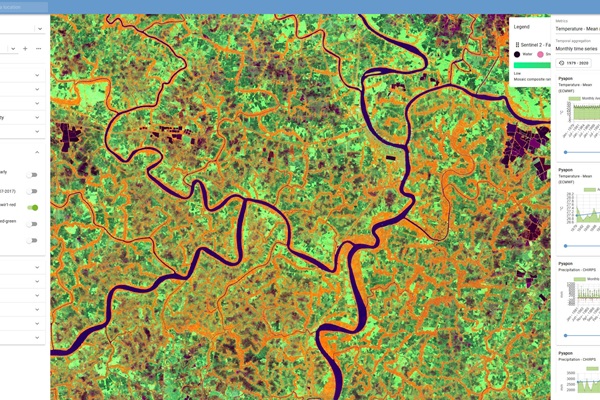
Rome- Earth Map, a pioneering initiative by the Food and Agriculture Organization of the United Nations (FAO) that leverages freely available archives of geospatial data for climate and environment monitoring and mapping has been honoured with a Google Geo for Good Impact Award.
The award, celebrating users and organizations creating real-world impact using Google’s mapping tools, recognizes the initiative as an important instrument for policymakers and other stakeholders to make informed decisions and drive positive actions for a more sustainable future.
“Achieving the global goals on climate change, biodiversity and environment requires changing the way we produce, distribute, process, retail and consume our food. Sustainably transforming our agrifood systems hinges on harnessing key data and information to inform policies, guide investments and drive actions. That is exactly what Earth Map brings in support of the stakeholders working on the frontlines of climate and food security,’’ said Maria Helena Semedo, FAO Deputy Director-General, welcoming the award.
Earth Map is a point-and-click cloud-based platform powered by Google Earth Engine and other free data sources without any need for coding. Earth Map enables any user to visualize, analyze, and monitor changes on Earth's surface, performing multi-temporal and multi-parametric land monitoring, climate assessments and other geospatial and Earth Observation-based analyses.
With its intuitive interface and powerful capabilities, Earth Map eases access to critical information, benefiting diverse stakeholders including researchers, policymakers, and local communities making it a comprehensive and accessible tool for addressing various environmental and climate-related challenges.
The application was presented in the Dublin Google Earth Engine Summit in 2018 and launched at FAO headquarters in 2020. Its approach and methodology are published in a peer-reviewed paper on the Journal of Remote Sensing.
Earth Map applications
Earth Map, stemmed from the successful Collect Earth application, has over 33,000 signed-in users in 50 countries to date and has made a substantial impact, with its applications spanning diverse regions and projects. Its data can be used for the protection of natural ecological, or cultural lands and waters; the effective conservation of natural areas; and for revitalizing and restoring ecosystems, among other initiatives.
FAO, for example, has used it as a valuable instrument for project preparation, monitoring, and cost-effective investment design. The tool has also proven crucial in supporting Member states in their grant applications to prominent international funding partners such as the Green Climate Fund (GCF), the Global Environment Facility (GEF), the European Development Bank and the World Bank.
Similarly, Earth Map has proved fundamental when designing large development projects and prioritizing target areas for countries such as Kazakhstan, Kosovo, Kyrgyzstan, Myanmar, Sri Lanka and Tajikistan. For example, Earth Map was instrumental in the area description and prioritization in a GCF project in Pakistan to transform the Indus Basin with climate resilient agriculture.
The platform's integration with Google mapping tools also facilitates dynamic mapping and quasi-real-time statistics generation. Its global scope and customization options make it a versatile tool for conservation and environmental initiatives across diverse geographic regions. As a result, Earth Map is currently being replicated in ad-hoc customizations to fit the needs of other projects and programs, including the United Nations Environment Program (UNEP)’s Strata portal that identifies and tracks stresses at the inter-linkage between climate change, environmental degradation and peace and security.
Countries can freely decide to contribute and share their national data, showcasing the tools commitment to fostering international cooperation and supporting impactful projects, from global climate assessments to regional data integration initiatives. Earth Map ensures a collaborative approach, providing free training and support as needed.
The principles guiding FAO’s Strategy on Climate Change and Action Plan highlight the importance of leveraging innovative solutions such as Earth Map to contribute to the fundamental priority of safeguarding food security and ending hunger with agrifood systems at the core of solutions for climate change and safeguarding the environment.